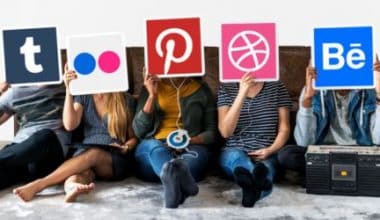LinkedIn has been transitioning from a Job Platform to a Content Platform where professionals and businesses share knowledge and interact. Instead of sharing random content, let’s create a great LinkedIn social media marketing strategy and tie everything together.
This guide is for businesses and individuals. The hope is that personal brands will help companies better reach their goals and vice versa. Imagine having a dozen strong personal brands fueling your company brand and having your company brand empowering, interacting with these tremendous personal brands, and building an excellent synergy.
We’ll need a great strategy to get the most out of it. Check out the 7-step guide to creating a winning LinkedIn social media strategy.
Key Points
- LinkedIn social media strategy is the process of promoting your brand through LinkedIn.
- LinkedIn’s social media strategy helps build brand awareness and establish trust for businesses and individuals, making it an important part of your wider social media marketing efforts.
- Some reasons why LinkedIn is the best social media platform for business include the fact that you can build your brand, it’s a great place for networking, and it helps you keep track of competitors as well.
- LinkedIn marketing can be more expensive than other social media platforms. Most reports say the cost-per-click (CPC) is between $5 and $6.
What Is LinkedIn Social Media Strategy?
LinkedIn social media strategy is the process of promoting your brand through LinkedIn. It involves using the platform to share valuable content and expand your network. It helps build brand awareness and establish trust for businesses and individuals, making it an important part of your social media marketing efforts.
LinkedIn social media strategy takes on different forms when used for personal and business purposes. Both methods aim to build a network and establish credibility, but their approaches and goals can differ significantly.
Personal Use
When individuals use LinkedIn’s social media strategy for personal marketing, the focus is on career development and personal branding. Professionals showcase skills, experience, and achievements to connect with peers, industry leaders, and potential employers.
Personal LinkedIn marketing involves creating a compelling profile, creating and sharing content, and networking.
Business Use
Businesses use LinkedIn marketing to promote their brand, products, or services to a targeted audience. This strategy focuses more on lead generation, sales, and content marketing. Business LinkedIn marketing can include creating a company page, posting job ads, exhibiting thought leadership, and sharing helpful content.
Why Is LinkedIn Social Media Strategy Important?

While LinkedIn can be a great place to showcase skills, network, build a personal brand, and find jobs, it’s particularly effective for business-to-business (B2B) marketing. LinkedIn data shows that 93% of B2B content marketers use LinkedIn for organic social media marketing.
Why? LinkedIn helps businesses reach and engage their audience more than other platforms. 70% of users say LinkedIn produces the best organic results. Impressively, messages on the platform, including cold outreach efforts, have four times higher open rates than email. Having a strong presence on the platform means you can directly engage with decision-makers and influencers in your industry.
Plus, LinkedIn users have twice the buying power of the average web audience. Audiences on LinkedIn are six times more likely to convert, according to LinkedIn.
How Do You Create a LinkedIn Social Media Strategy?
After reading why LinkedIn’s social media strategy is important, the next section will explain how to create one. First, there’s no “right” way to use LinkedIn for business.
Some companies see the platform as a branding tool. Others use it as a hiring hub.
A few essential steps will set you up for success on the platform.
#1. Define Your Objectives
Start by clearly defining the objectives you want to achieve through LinkedIn. These objectives could align with your other social media goals, such as boosting brand awareness or generating leads.
When your objectives are firmly laid out, you have a solid foundation on which to build the rest of your LinkedIn social media strategy. For instance, if your goal is to generate leads, your strategy will comprise tools like lead ads, lead magnets, and lead forms.
The following ad from Pcloudy promotes the company’s trends report as a lead magnet, which could contribute to the company’s lead generation goals.
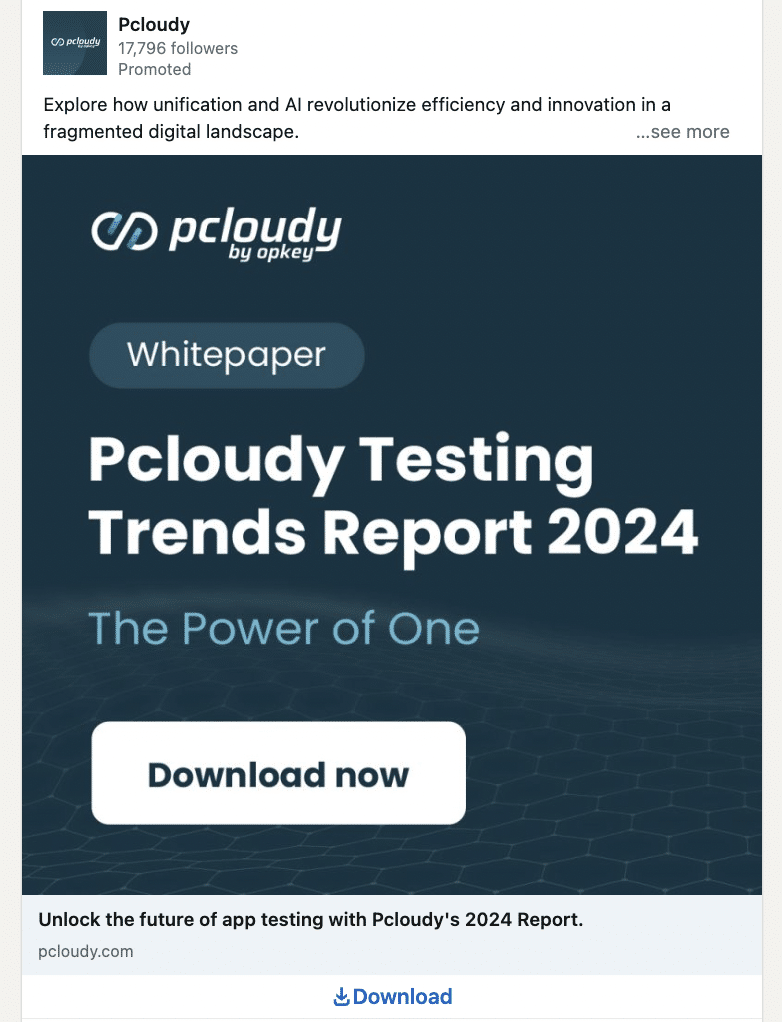
#2. Optimize Your LinkedIn Business Page
A well-optimized LinkedIn business page sets you up for LinkedIn marketing success. It positively represents your brand and enhances your credibility.
It also boosts your LinkedIn SEO within the platform and search engines. Your LinkedIn business page is where people will go when they want to learn more about your business.
So, go beyond providing the basic organizational information. Show what life is like at your organization and the people behind your brand. This will give people a deeper understanding of your brand’s values and identity.
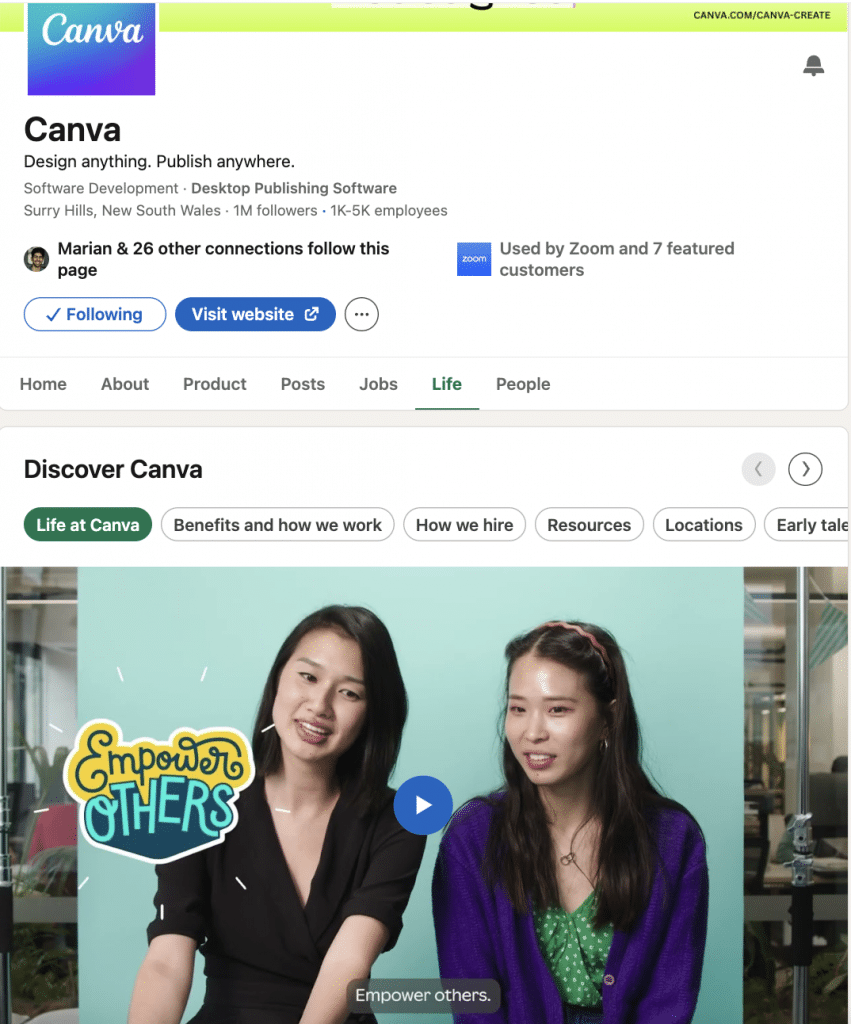
You can even use the “Product” tab to highlight key details about your product, such as the pricing and top features. That way, prospects can learn more about your product offering without leaving LinkedIn.
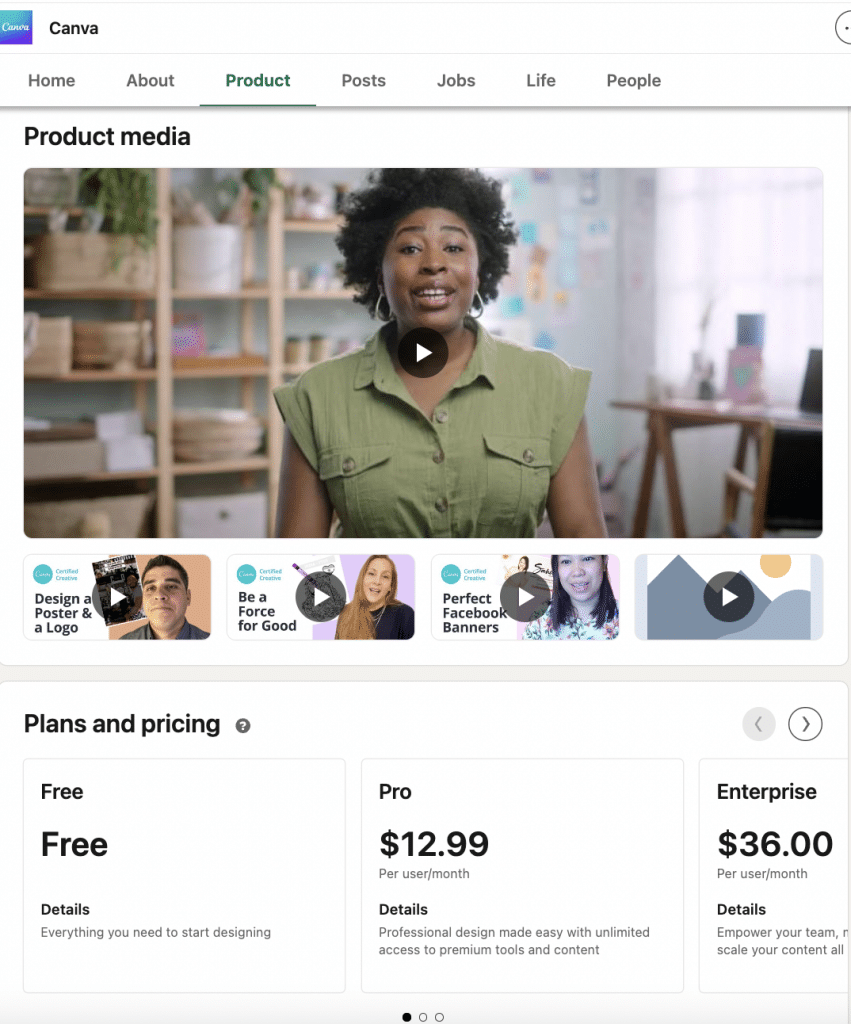
#3. Develop a Content Strategy
Anything B2B brands can do to squeeze more out of their content strategies is a plus.
And with the type of engagement LinkedIn generates, it’s a great addition to your social media content strategy. Have a solid strategy in place for the types of content to create and how to distribute them on the platform.
Like it or not, “thought leadership” content is a staple of B2B social media and marketing on LinkedIn. This includes:
- Storytelling posts
- Firsthand tips and experiences
- Discussions and threads
- Ever notice how pretty much every viral LinkedIn post comes from a personal account?
That’s no coincidence. Personal stories and anecdotes are among the platform’s most compelling content. So make sure this type of content is a staple to your LinkedIn social media strategy.
But that doesn’t mean thought leadership content is all you should post. Keep it diverse with blog posts, infographics, original reports, case studies, and testimonials. Besides these, native documents typically see higher impression rates than other post types. Sprout Social regularly shares original reports and trend predictions as native documents.
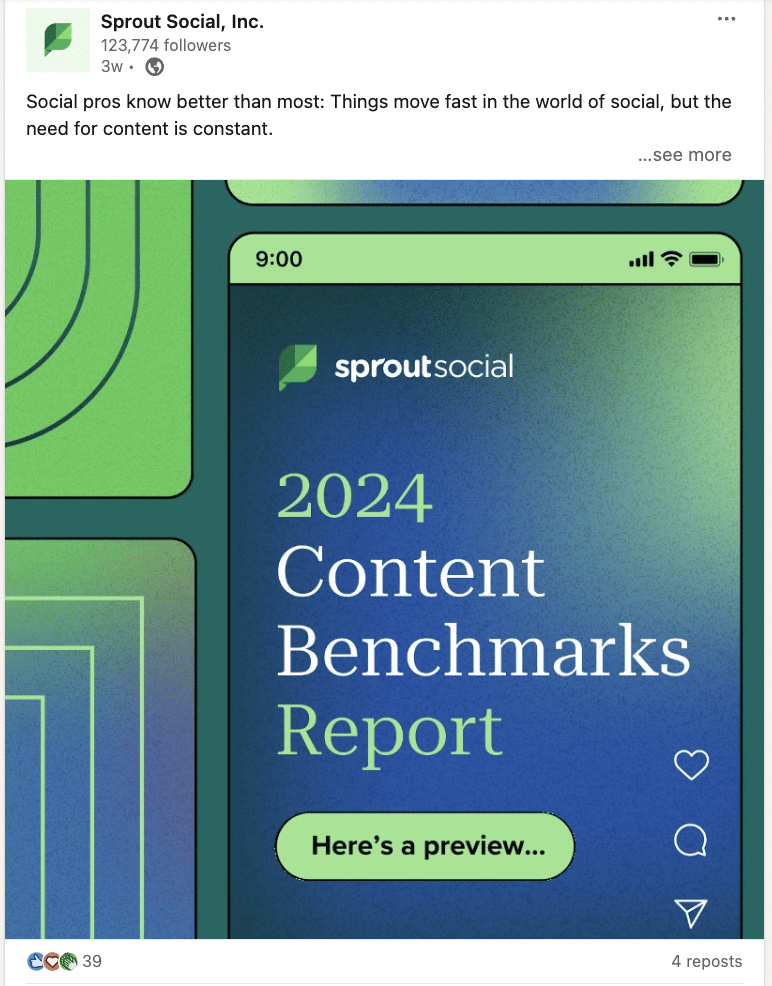
Formats and content types aside, create content that addresses your audience’s needs and pain points. Answer their questions, teach them how to do something, and share insights that could inform their strategies.
#4. Use Employee Advocacy
Although the platform is all about business, personal accounts are even more valuable on LinkedIn. Whether you’re an employee, a solo business owner, or someone at the C-level, this rings true.
Beyond that, personal accounts can be an extension of business accounts for promotion. That’s why employee advocacy is such a critical element of LinkedIn marketing.
Have your employees share your brand’s content to boost it. Doing so means that exponentially more people see your content. Also, this means that employees can spice up their posts and give their captions a personal touch.
At Sprout, their internal team regularly shares new content and product updates via LinkedIn.
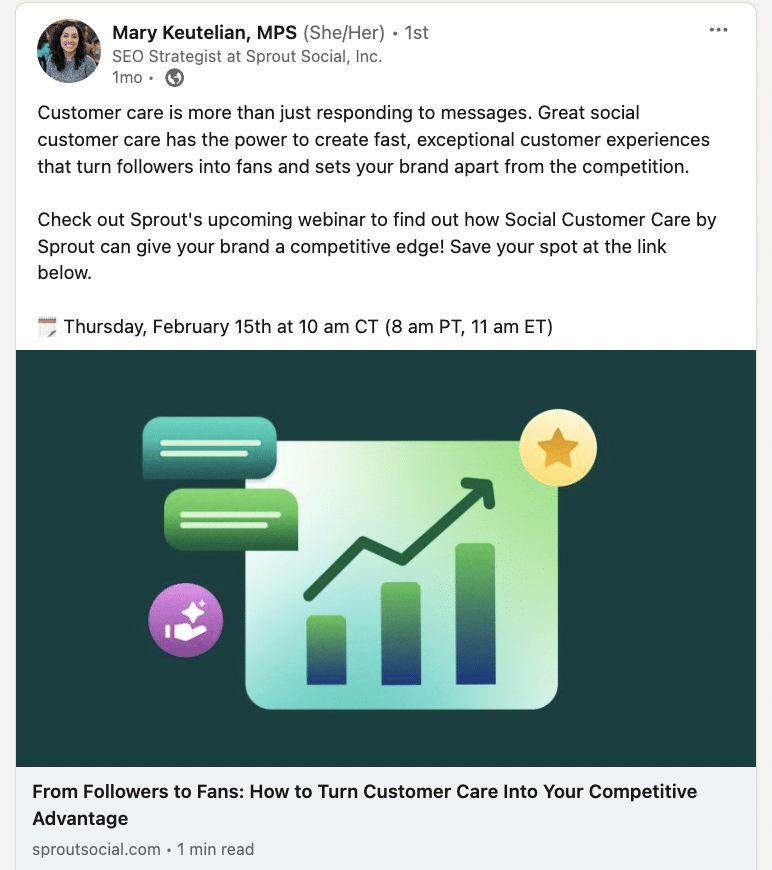
#5. Understand Your Audience
LinkedIn’s user demographics differ from those of other social platforms. LinkedIn users tend to be older and have higher incomes.
But that’s just a starting point. It is important to understand your audience and what information they’re looking for on your LinkedIn Page.
LinkedIn analytics are a good way to find the demographics specific to your audience. Within your Visitor and Follower dashboards, you can see what industries your followers are in, their job titles, and their locations.
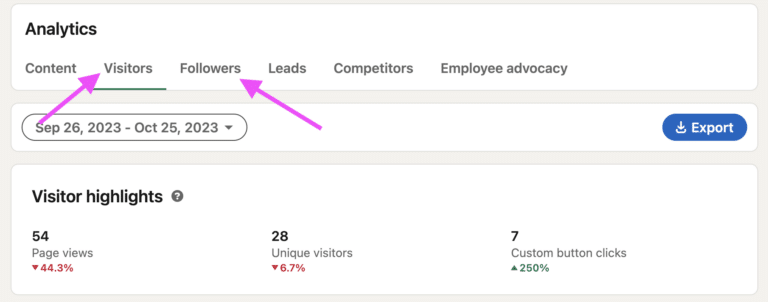
Use these insights to tailor your future content and determine whether your existing content resonates with the right people.
For example, you might notice that your followers are mainly in the tech industry but most engaging with your posts about marketing.
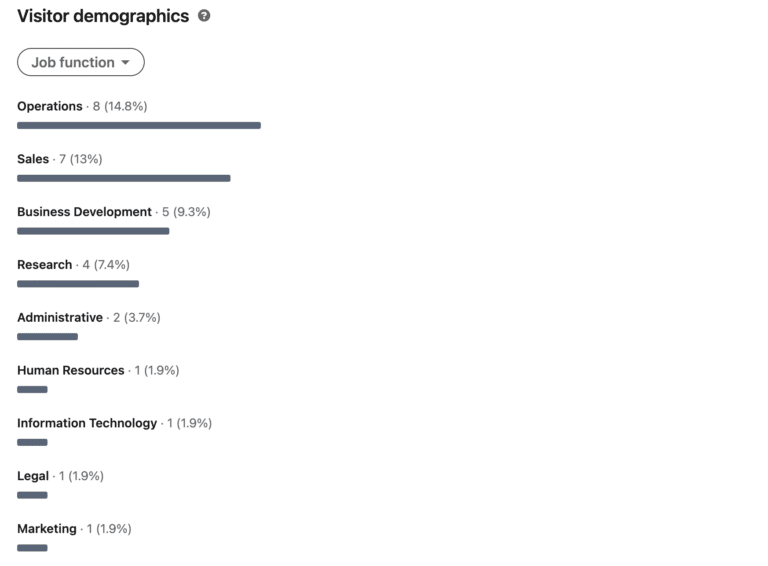
#6. Track and Refine Your Performance
The best way to improve your LinkedIn social media strategy over time is to track and analyze the results of your efforts. LinkedIn Analytics provides a good overview of your page and post-performance, but platforms like Hootsuite Analytics help you go even more profound.
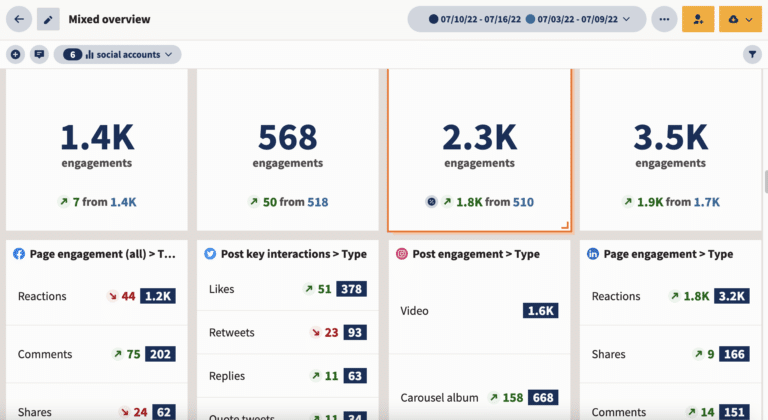
Use the insights from these tools to refine your LinkedIn marketing strategy. Experiment with different types of content, posting times, and messaging styles to see what resonates best with your audience.
For example, a quick look at your analytics might reveal your page performance is dwindling.
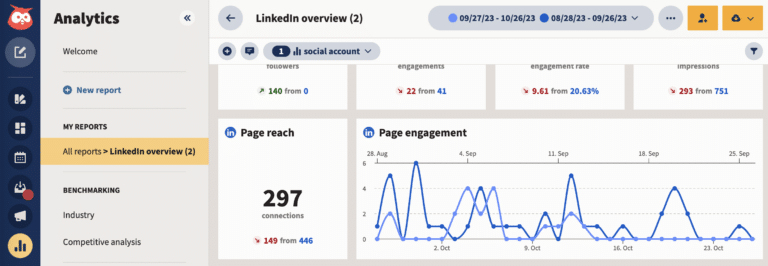
Did this happen just after you introduced a new content type? Or maybe a new campaign? Performance might also be the result of a recent algorithm update. Or, your audience engagement might be dropping off because you’re not actively engaging with them through comments or direct messaging.
All of these insights can help you make adjustments to your strategy and stay ahead of the curve. Always remember to share your results! Social media doesn’t exist in a silo, and sharing your LinkedIn marketing results with key stakeholders can help you gain buy-in for future initiatives and investments.
#7. Focus On Leads, Not Sales
LinkedIn is more about social selling than social commerce. As mentioned earlier, it’s the top brand for B2B lead generation. It’s a perfect platform for building and nurturing connections, eventually leading to sales.
It’s less effective as a platform for spur-of-the-moment purchases. People don’t go there when looking for the latest trending items to buy.
So, rather than trying to sell directly on LinkedIn, focus on building relationships and credibility. Reach out when you see an opportunity, but offer expert advice rather than a hard sell. You’ll be front of mind when the time is right for a buyer to make the purchasing call.
That said, using LinkedIn to drive online sales is not impossible. If you want to take this approach, position your product or service in a business-appropriate context.
Use our template and the above steps to build a successful social media marketing strategy.
Lamphills Social Media Strategy Template
Why Is LinkedIn the Best Social Media Platform for Business?
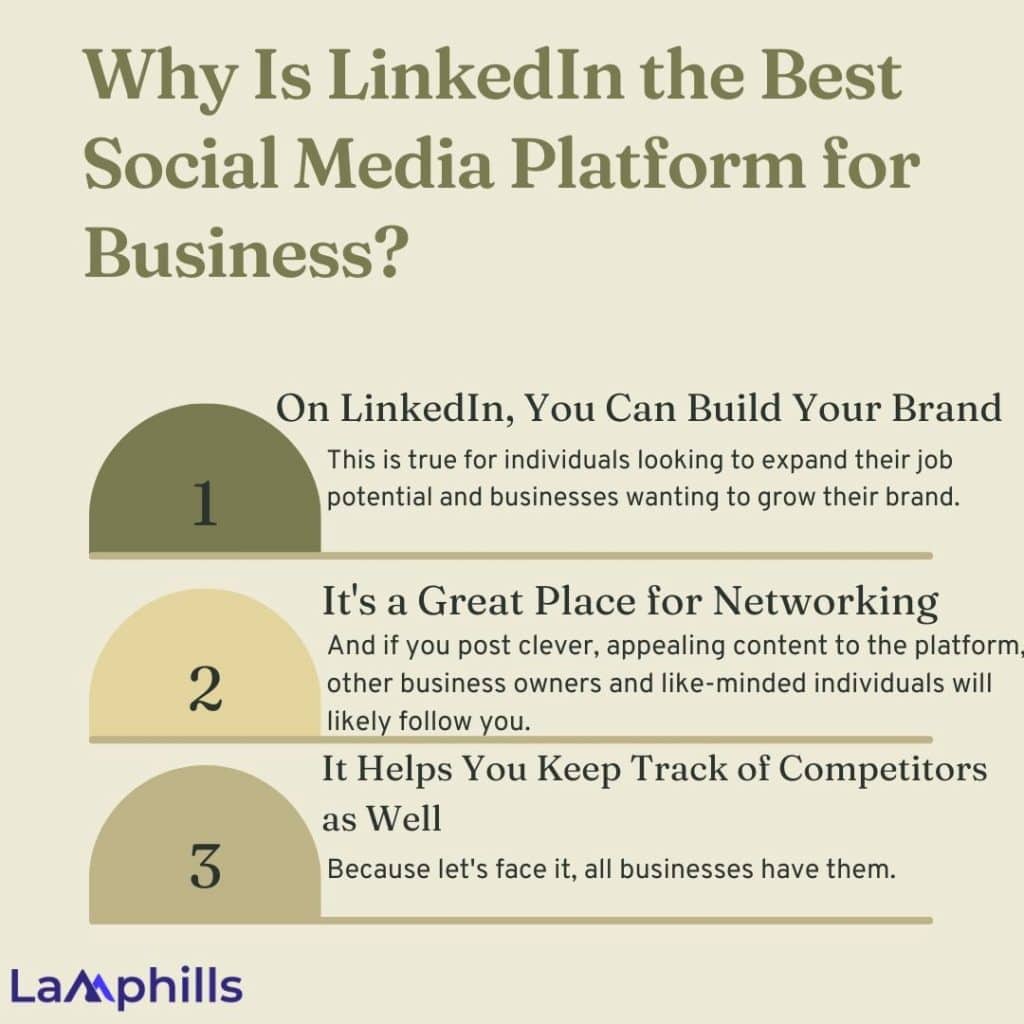
When most people talk about social media, they usually refer to platforms like Facebook or Instagram, but they rarely think of LinkedIn as part of the vast array of available platforms.
We tend to assume that LinkedIn isn’t such a valuable place to be, and often, even businesses make this mistake, assuming that it would be far more beneficial to focus on their presence on Twitter, for example.
There is logic behind this—LinkedIn is a place for businesses, but I’m looking to advertise to real people, and they will be on other, more laid-back platforms, so I might as well go there, too.
This logic is flawed. Why? I’m just about to show you. Here are some reasons why LinkedIn is the best social media platform for business.
#1. On LinkedIn, You Can Build Your Brand
This is true for individuals looking to expand their job potential and businesses wanting to grow their brand.
As an individual, where can a possible employer find you? On Facebook or Instagram. But do you really want them to see that snapshot of you in your undies at the beach or the dirty joke you posted last night?
Probably not. These are personal details about you that chip away at your professional brand.
You need a place that showcases all your professional assets and past experience. A place where you can write intelligent and well-thought-out, relaxed, and personal entries that convey that you are a professional. That’s LinkedIn.
It’s the same for businesses. Another business you’re looking to partner with doesn’t want to see your witty Instagram ad campaign, clever though it may be. It wants to see you as a good investment for the future.
#2. It’s a Great Place for Networking
And if you post clever, appealing content to the platform, other business owners and like-minded individuals will likely follow you. This doesn’t only mean they’ll be aware of you as a brand but also that they might recommend you to others.
This is the main benefit of LinkedIn, in our opinion.
It can help you find new people in your work sector and others. People you may want to collaborate with in the near future. It’s like giving your card to a hundred businesses without having to drive around from place to place.
LinkedIn is also a great way to keep track of your contacts.
Professionals don’t become friends on Facebook; they add each other on LinkedIn. Professionals don’t want to see a picture of your kids at Sunday’s barbecue but want to keep track of your professional info.
#3. It Helps You Keep Track of Competitors as Well
Because let’s face it, all businesses have them. And you have to keep track of what they are doing to stay atop the game, right? Well, there’s no better place to do that than LinkedIn.
Just like your Facebook profile isn’t very telling for a potential business partner, your competitors’ Facebook pages won’t really tell you what they’re up to.
And you need to keep that in mind to grow as a business.
How to Optimize Your LinkedIn Profile as a Social Media Manager?
LinkedIn optimization is a powerful tool for advancing your career and industry influence. It is also useful for any professional with a digital profile. What was once a social media platform for resumes and CVs is now the top professional networking platform millions of people use.
LinkedIn provides an excellent platform for its users to market their abilities, make connections, and grow in their careers. Depending on how it is done, LinkedIn optimization can be a ticket to furthering your career and leaving a lasting impression in your industry.
Following these steps can make a strong first impression, increase your visibility to potential connections and employers, and differentiate yourself from other professionals in your field. Check out the checklist below for a detailed step-by-step guide:
Benefits of LinkedIn Social Media Strategy
You may have already considered using social media to advertise your business, but have you considered using LinkedIn?
Creating a LinkedIn social media marketing strategy can be an incredible way to boost your business while reaching high-quality contacts. For example, do you know that LinkedIn has over 690 million users? Moreover, these professionals are uniquely available through the platform, and a significant amount of professional and personal information is shared.
If you want your business to succeed and thrive, advertising on LinkedIn is necessary. Here are some of the top benefits:
#1. It’s Incredibly Effective
Marketing through social media platforms can be expensive, time-consuming, and often lack results. However, a LinkedIn marketing strategy involves an audience of professionals willing to share more of their personal information with the networking site.
With this information readily available, businesses can target individuals with hyper-focused results. You can target by profession, education, location, and many other factors that make LinkedIn’s ad service significantly more attractive than other social media platforms.
#2. Campaigns to Fit Your Budget
Budgeting is straightforward with a LinkedIn marketing strategy. The minimum ad spend is $2 per day, but this is inexpensive in terms of social media marketing.
In addition, you can select whether you would prefer the ad to cost per click or per impression. If you choose per click, you will only be charged for the actual interactions and engagements a post receives. If you prefer, you can post the ad geared towards impressions and be charged per view instead.
With simplistic and extremely beneficial ad costs processed in this way, you can be sure that whatever you want to achieve will have the best opportunities to succeed.
#3. Increases brand awareness
There are 690+ million members on LinkedIn. That’s millions of people you could potentially reach with the right LinkedIn marketing strategy.
Moreover, users’ interactions with public profiles are visible to their connections. That means when someone likes a post or comments on it, the post will show up in the feeds of their connections. So, there’s a good chance that your content will show up in the feeds of people who aren’t even following you.
Is LinkedIn Marketing Expensive?
LinkedIn marketing can be more expensive than other social media platforms, with most reports saying cost-per-click (CPC) lands between $5 and $6. However, it’s important to consider the quality of the audience you are reaching and the potential return on investment for your brand.
Moving your advertising budget to LinkedIn may make sense if your audience is active on LinkedIn or sees great results from your ads.
Bottom Line
In order to get the most out of your LinkedIn social media marketing efforts, you need a solid strategy to define your objectives and your audience, as well as to document and get people involved.
Then, you should set yourself and your teammates in the best position possible by creating a LinkedIn playbook and playground and using tools like Canva to do the heavy lifting for you so you can focus on what matters most.
Tell great (micro) stories, inspire people, and build a community of like-minded people on LinkedIn. Gone are the days of simply sharing that you’ve published a new article or have a product update. Embrace the age of storytelling and add some excitement to your work and your audience’s day.
All the best!
Similar Articles
- Top 11 Social Media Marketing Agencies for Small Businesses I Recommend in 2024
- How to Be a Social Media Manager for a Small Business With No Experience in 2024
- 12+ Social Listening Platforms to Enhance Your Brand Monitoring Strategies
- Top 51 Social Listening Agencies & All You Need



